Padiglione dell'Azerbaijan. Beyond the Line / Vita Vitale

Tofik Javadov, Oil Workers, 1958-59
Dal 6 May 2015 al 22 November 2015
Venezia
Luogo: Palazzo Lezze / Ca’ Garzoni
Indirizzo: Campo S. Stefano, San Marco 2949
Curatori: Pury de Pury, Emin Mammadov / Artwise: Susie Allen, Laura Culpan, Dea Vanagan
Telefono per informazioni: +39 041 5264546
E-Mail info: gestione3@studioesseci.net
Sito ufficiale: http://www.azerbaijanvenicebiennale.com
Quest'anno alla 56. Esposizione Internazionale d’Arte – la Biennale di Venezia sarà presente per la seconda volta l'Arzebaijan, sostenuto dalla Fondazione Heydar Aliyev. Per l'edizione 2015 della Biennale Arte, l'Azerbaigian presenterà due mostre rivolte al pubblico internazionale che celebrano le voci di artisti che trattano di questioni sociali, di politica e ecologia di rilevanza globale.
De Pury de Pury e Emin Mammadov curano la prima mostra, Beyond the Line che mette in luce lo spirito che ancora permane di artisti le cui vite e il cui lavoro nella metà del XX secolo furono oscurati dal regime repressivo sovietico. Susie Allen, Laura Culpan, e Dea Vanagan di Artwise curano invece la seconda mostra Vita Vitale, con la quale l’Arzebaijan mette insieme artisti contemporanei internazionali il cui lavoro esprime la preoccupazione per il destino del nostro pianeta. Se le si guarda insieme, le due mostre rivelano un paese che contempla il suo passato e il suo futuro, attento all'impatto che le trasformazioni sociali e industriali del XX secolo hanno sul suo stesso suolo e su quello del mondo intero. Beyond the Line rivisita un momento cruciale della storia dell'Arzebaijan, facendo sentire le voci degli artisti di questo paese della metà del secolo scorso che erano state fatte tacere o ignorate dalle regole del Soviet.
Con Vita Vitale, l'Arzebaijan guarda avanti e oltre i propri confini geografici costituendo una piattaforma internazionale per artisti e scienziati, che combatte le sfide ecologiche che stiamo affrontando oggigiorno a livello globale e, domani, per effetto delle nostre conquiste tecnologiche e del conseguente aumento del consumismo. Le mostre presentano entrambe la voce di artisti che gravitano attorno a temi sociali e ambientali che definiscono non solo passato, presente e futuro dell'Azerbaijan ma del pianeta tutto.
Beyond the Line
a cura di de Pury de Pury, Emin Mammadov
L'Arte può parlare della situazione ambientale in maniera diretta e allegoricamente. Dovendo lavorare in condizioni di forte controllo gli artisti azeri d'avanguardia della metà del XX secolo spesso hanno finito per usare l'allegoria. Con gli anni ‘60 gli artisti che avevano atteggiamenti “di ribellione” e che deviavano dall'ideologia comunista non venivano più arrestati, giustiziati o banditi. Venivano puniti in maniera differente: il loro lavoro veniva ignorato, semplicemente non potevano tenere delle mostre e non era loro consentito viaggiare all'estero. In questo modo venivano esclusi dalle strutture dello Stato che regolavano l'arte ufficiale. L'Arzebaijan presenta con orgoglio la loro opera in Beyond the Line esponendo le opere di artisti non conformisti del periodo sovietico: Javad Mirjavadov, Tofik Javadov, Ashraf Murad, Rasim Babayev, e lo scultore Fazil Najafov.
In mostra sarà inoltre presentato il film Stepping over the horizon, diretto da Shamil Najafzada e anche un'installazione di Huseyn Hagverdi, artista che soffrì molto sotto il regime sovietico ma ciò nonostante di grande creatività.
Esporre questi artisti finora rimasti oscuri rappresenta la vittoria del loro spirito indistruttibile. Oggi, essi parlano di quel periodo con il cuore, simboleggiando così un’ecologia dell'anima umana. Beyond the Line funge da controparte alla mostra degli artisti internazionali di Vita Vitale, cioè il secondo padiglione dell'Azerbaijan alla 56. Biennale internazionale d'arte di Venezia.
Vita Vitale
a cura di Artwise: Susie Allen, Laura Culpan, Dea Vanagan
Vita Vitale prende in esame il delicato equilibrio dell'ecosistema del nostro pianeta e l'impatto umano sul mondo della natura. La mostra riunisce insieme artisti contemporanei di Austria, Canada, Francia, Italia, Paesi Bassi, Pakistan, Romania, Svizzera, UK, USA, Uzbekistan, and Azerbaijan - un’esposizione che travalica i confini del linguaggio, del patrimonio culturale e della stessa geografia per accrescere la consapevolezza di ciò che l’uomo e i suoi interventi comportano sull’ambiente e sulla trasformazione globale del nostro pianeta.
Opere multimediali e installazioni di artisti internazionali - tra questi Mircea Cantor, Loris Cecchini, Tony Cragg, Jacco Olivier, Julian Opie, Graham Stevens, Diana Thater, and Andy Warhol — the IDEA Laboratory, un luogo per sviluppare soluzioni creative per il futuro, e il programma degli eventi correlati alla mostra sviluppano un collegamento della ricerca più avanzata tra scienza e arte, evidenziando con grande forza come il progresso tecnologico abbia portato ad un mondo in cui la natura è aggredita dalla deforestazione, dall’inquinamento legato ai combustibili fossili e da quello dei mari. La mostra ci spinge a riflettere sul nostro ruolo che è fondamentale, sia per quanto riguarda il caos che la preservazione dell'ecologia, spingendoci ad un confronto con i potenziali pericoli che derivano dell'ignorare i messaggi che le opere trasmettono, allo stesso tempo suggerendo strumenti creativi e idee per mettere “al sicuro” tutti i futuri del mondo.
De Pury de Pury e Emin Mammadov curano la prima mostra, Beyond the Line che mette in luce lo spirito che ancora permane di artisti le cui vite e il cui lavoro nella metà del XX secolo furono oscurati dal regime repressivo sovietico. Susie Allen, Laura Culpan, e Dea Vanagan di Artwise curano invece la seconda mostra Vita Vitale, con la quale l’Arzebaijan mette insieme artisti contemporanei internazionali il cui lavoro esprime la preoccupazione per il destino del nostro pianeta. Se le si guarda insieme, le due mostre rivelano un paese che contempla il suo passato e il suo futuro, attento all'impatto che le trasformazioni sociali e industriali del XX secolo hanno sul suo stesso suolo e su quello del mondo intero. Beyond the Line rivisita un momento cruciale della storia dell'Arzebaijan, facendo sentire le voci degli artisti di questo paese della metà del secolo scorso che erano state fatte tacere o ignorate dalle regole del Soviet.
Con Vita Vitale, l'Arzebaijan guarda avanti e oltre i propri confini geografici costituendo una piattaforma internazionale per artisti e scienziati, che combatte le sfide ecologiche che stiamo affrontando oggigiorno a livello globale e, domani, per effetto delle nostre conquiste tecnologiche e del conseguente aumento del consumismo. Le mostre presentano entrambe la voce di artisti che gravitano attorno a temi sociali e ambientali che definiscono non solo passato, presente e futuro dell'Azerbaijan ma del pianeta tutto.
Beyond the Line
a cura di de Pury de Pury, Emin Mammadov
L'Arte può parlare della situazione ambientale in maniera diretta e allegoricamente. Dovendo lavorare in condizioni di forte controllo gli artisti azeri d'avanguardia della metà del XX secolo spesso hanno finito per usare l'allegoria. Con gli anni ‘60 gli artisti che avevano atteggiamenti “di ribellione” e che deviavano dall'ideologia comunista non venivano più arrestati, giustiziati o banditi. Venivano puniti in maniera differente: il loro lavoro veniva ignorato, semplicemente non potevano tenere delle mostre e non era loro consentito viaggiare all'estero. In questo modo venivano esclusi dalle strutture dello Stato che regolavano l'arte ufficiale. L'Arzebaijan presenta con orgoglio la loro opera in Beyond the Line esponendo le opere di artisti non conformisti del periodo sovietico: Javad Mirjavadov, Tofik Javadov, Ashraf Murad, Rasim Babayev, e lo scultore Fazil Najafov.
In mostra sarà inoltre presentato il film Stepping over the horizon, diretto da Shamil Najafzada e anche un'installazione di Huseyn Hagverdi, artista che soffrì molto sotto il regime sovietico ma ciò nonostante di grande creatività.
Esporre questi artisti finora rimasti oscuri rappresenta la vittoria del loro spirito indistruttibile. Oggi, essi parlano di quel periodo con il cuore, simboleggiando così un’ecologia dell'anima umana. Beyond the Line funge da controparte alla mostra degli artisti internazionali di Vita Vitale, cioè il secondo padiglione dell'Azerbaijan alla 56. Biennale internazionale d'arte di Venezia.
Vita Vitale
a cura di Artwise: Susie Allen, Laura Culpan, Dea Vanagan
Vita Vitale prende in esame il delicato equilibrio dell'ecosistema del nostro pianeta e l'impatto umano sul mondo della natura. La mostra riunisce insieme artisti contemporanei di Austria, Canada, Francia, Italia, Paesi Bassi, Pakistan, Romania, Svizzera, UK, USA, Uzbekistan, and Azerbaijan - un’esposizione che travalica i confini del linguaggio, del patrimonio culturale e della stessa geografia per accrescere la consapevolezza di ciò che l’uomo e i suoi interventi comportano sull’ambiente e sulla trasformazione globale del nostro pianeta.
Opere multimediali e installazioni di artisti internazionali - tra questi Mircea Cantor, Loris Cecchini, Tony Cragg, Jacco Olivier, Julian Opie, Graham Stevens, Diana Thater, and Andy Warhol — the IDEA Laboratory, un luogo per sviluppare soluzioni creative per il futuro, e il programma degli eventi correlati alla mostra sviluppano un collegamento della ricerca più avanzata tra scienza e arte, evidenziando con grande forza come il progresso tecnologico abbia portato ad un mondo in cui la natura è aggredita dalla deforestazione, dall’inquinamento legato ai combustibili fossili e da quello dei mari. La mostra ci spinge a riflettere sul nostro ruolo che è fondamentale, sia per quanto riguarda il caos che la preservazione dell'ecologia, spingendoci ad un confronto con i potenziali pericoli che derivano dell'ignorare i messaggi che le opere trasmettono, allo stesso tempo suggerendo strumenti creativi e idee per mettere “al sicuro” tutti i futuri del mondo.
SCARICA IL COMUNICATO IN PDF
COMMENTI

-
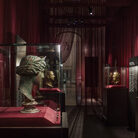 Dal 11 December 2025 al 9 April 2026
Firenze | Museo Archeologico Nazionale di Firenze
Dal 11 December 2025 al 9 April 2026
Firenze | Museo Archeologico Nazionale di Firenze
Icone di Potere e Bellezza
-
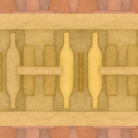 Dal 11 December 2025 al 11 January 2026
Roma | Palazzo Esposizioni Roma
Dal 11 December 2025 al 11 January 2026
Roma | Palazzo Esposizioni Roma
Giorgio Morandi nella Collezione Eni. Un viaggio attraverso la storia culturale del cane a sei zampe e l’eredità di Enrico Mattei
-
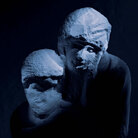 Dal 12 December 2025 al 18 January 2026
Roma | MAXXI Museo nazionale delle arti del XXI secolo
Dal 12 December 2025 al 18 January 2026
Roma | MAXXI Museo nazionale delle arti del XXI secolo
Robert Wilson. Mother Michelangelo. Pietà Rondanini Arvo Pärt. Stabat Mater
-
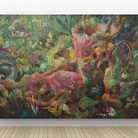 Dal 11 December 2025 al 6 April 2026
Roma | MACRO – Museo d’Arte Contemporanea di Roma
Dal 11 December 2025 al 6 April 2026
Roma | MACRO – Museo d’Arte Contemporanea di Roma
Cara Città (abbracciami)
-
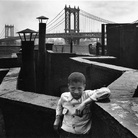 Dal 2 December 2025 al 19 February 2026
Milano | Centro Culturale di Milano
Dal 2 December 2025 al 19 February 2026
Milano | Centro Culturale di Milano
Walter Rosenblum. Il mondo e la tenerezza
-
 Dal 30 November 2025 al 12 April 2026
Gallarate | Museo MA*GA
Dal 30 November 2025 al 12 April 2026
Gallarate | Museo MA*GA
Kandinsky e l’Italia


